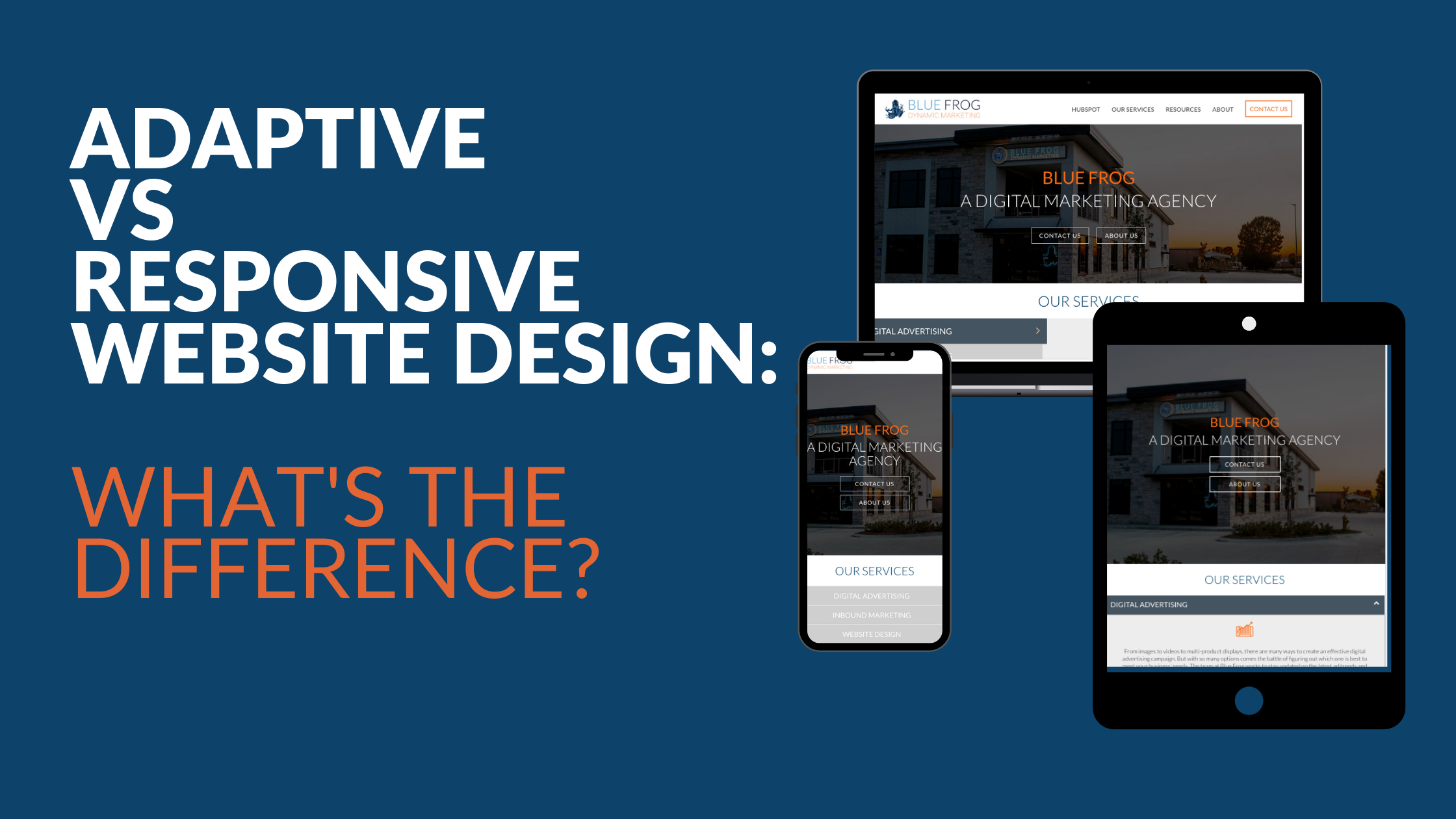Table Of Content
Some are outliers at either end of the scale while others occupy the middle ground between size boundaries. By opting for a best-fit approach, however, companies can adapt to the broadest set of customer needs. In this article, we’ll define responsive and adaptive design and then explore the pros and cons of each. An adaptive site may be a better choice for ecommerce businesses whose target audiences prefer to shop using a mobile app. These businesses aim to create highly targeted experiences for their audience because they’ve gathered enough data to understand their shopping habits and preferences, and they want to encourage app downloads. The same can be said about the next example from Slam Jam, an online apparel shop.
How do you see product management evolving over the next 5 years? What are your hopes for the practice?
That means the UX designer has total control over each layout and can ensure the user experience is optimal for each screen size. As a result, if the UX designer believes it makes sense to include different content for different screen sizes, they can do so. Adaptive design will (theoretically) ensure the best user experience according to whichever device the user is using to interface. Unlike responsive design, where a screen “flows” from desktop design into a smaller device’s, adaptive design offers tailor-made solutions. As the name suggests, they adapt to the user’s situational needs and capabilities.
Responsive Design Pros

As an example, modifications of eligibility criteria might lead to a shift in the patient population over time, and results may depend on whether patients were recruited before or after the interim analysis. Consequently, the ability to combine results across independent interim stages to assess the overall treatment effect becomes questionable. The analysis of an AD trial often involves combining data from different stages, which can be done e.g. with the inverse normal method, p value combination tests or conditional error functions [70, 71]. It is still possible to compute the estimated treatment effect, its CI and a p value. If these quantities are, however, naively computed using the same methods as in a fixed-design trial, then they often lack the desirable properties mentioned above, depending on the nature of adaptations employed [72]. This is because the statistical distribution of the estimated treatment effect can be affected, sometimes strongly, by an AD [73].
Iterative Learning Control with Adaptive Sliding Mode Control (ILC-ASMC)
In this section, we briefly highlight five key areas where additional thought and discussions are necessary when planning to use an AD. Considering these aspects is vital for clinical investigators, even if they have a statistician to design and analyse the trial. The advice we give here is largely based on our own experiences with ADs in the UK public sector. After 24 patients had been randomised, the probability of randomising to TI was just over 7%, so recruitment to this arm was terminated and the randomisation probabilities for IA and TA recalculated (Fig. 2).
Products
The bottom line is that random lows are eliminated by the stopping rule but random highs are not, thus, biasing the treatment effect estimate upwards. This phenomenon occurs for a wide variety of ADs, especially when first-stage efficacy data are used to make adaptations such as discontinuing arms. Therefore, we provide several solutions that lead to sensible treatment effects estimates, CIs and p values from AD trials. Reviewing observed data at each interim analysis requires careful thought to avoid introducing bias into the trial. For example, they should not see any unblinded results for specific arms during the study to prevent ad hoc decisions being made about discontinuing arms or changing allocation ratios on the basis of accrued data.
You are unable to access springboard.com
The website smoothly transforms once you switch to a device with a smaller screen. The products are displayed in two columns instead of four, and the menu moves to the bottom to make the search bar more accessible. The carousel allows users to discover new products without having to zoom in and out. Responsive design use cases are seemingly endless because of how versatile and approachable responsive design is. Any personal and commercial websites can benefit from being responsive and flexible, as you’ll see from the examples described here.
Could adaptive designs be the answer to oncology clinical development success? - Pink Sheet
Could adaptive designs be the answer to oncology clinical development success?.
Posted: Sat, 06 Apr 2024 17:21:41 GMT [source]
Product managers will increasingly use data to understand customer needs, predict trends, and make informed decisions about product development. The integration of AI, machine learning, IoT, and other emerging technologies will become more prevalent in product development in other areas as well, providing insights, automating tasks, and creating new product features or services altogether. Once we have this deeper understanding, products can be tailored to meet the specific needs and preferences of users, increasing their relevance and effectiveness.
Browse UX / UI Design Topics
Design that adapts to the user's needs at those different sizes rather than just reducing or condensing the design is called adaptive design. A compact, trend-setting coupe defines GAC’s concept of City Run, which combines the size of a hatchback with the exterior and interior elements of a coupe. The two-seater vehicle made its way to Milan Design Week 2024, where GAC introduced its Transparent Display Concept as well. When the driver and passenger step inside the electric vehicle, they find a see-through infotainment and driver’s screen in front of them, in a cabin resembling the retro-synth era of the 80s. Its adaptive trunk was presented during Milan Design Week 2024, which is a backpack-type boot.
It offers multiple graphical user interfaces (GUIs) based on defined viewport sizes (the visible area of a webpage). A Milanese and Guangzhou commuter is the moniker assigned to GAC’s concept City Pod, an electric vehicle inspired by the iconic 1950s Isetta. Similar to the pace of life in these two cities, City Pod is designed to be fast-paced, applied with a panoramic glass shell to enable the driver and passenger to see through their surroundings in 360-degree vision. I’ve used behavioral design at Livongo, Teladoc, and Dario Health to promote healthy behaviors for our members, applying various techniques to drive engagement and achieve clinical outcomes.
Now, with over 23 billion texts sent each day, texting is a vital communication channel that exemplifies the universal appeal of inclusive design. By zzzzBov’s definition, Adaptive Design is JavaScript-driven and is as much about the reacting to the type of device as it about screen sizes. For instance, a tablet may have a high-resolution screen, yet it needs larger touch targets.
It’s also worth noting that many responsive designs are simply scaled versions of desktop sites, meaning they can take far longer to load on mobile devices than best-fit adaptive offerings. In theory, this allows every user to experience webpages or other graphical elements as intended — no matter the size of their device. Many CMS systems offer responsive design capabilities to support the increasing number of diverse mobile device users on websites. Things were simpler before we could get the internet on mobile phones and tablets. Having an online presence meant designing a website that would only need to display on a desktop, and maybe a laptop, computer screen. In short, with responsive design, you dictate how your content should react, whereas with adaptive design, you also determine the end result.
In addition, outside elements such as advertisements may not load properly and visual elements are at risk of shifting on-screen in response to differing screen sizes. The best-fit nature of adaptive design makes it less flexible than responsive design alternatives. Developers must create multiple design templates based on standard widths but users may still encounter form or function issues if their screen size lies even slightly outside the norm. Responsive design emerged as an alternative to adaptive design and focuses on accommodating any device at any size. Sparked by the rapid uptick in mobile device use, responsive design uses a single, fixed GUI layout that actively responds to user screen size.

No comments:
Post a Comment